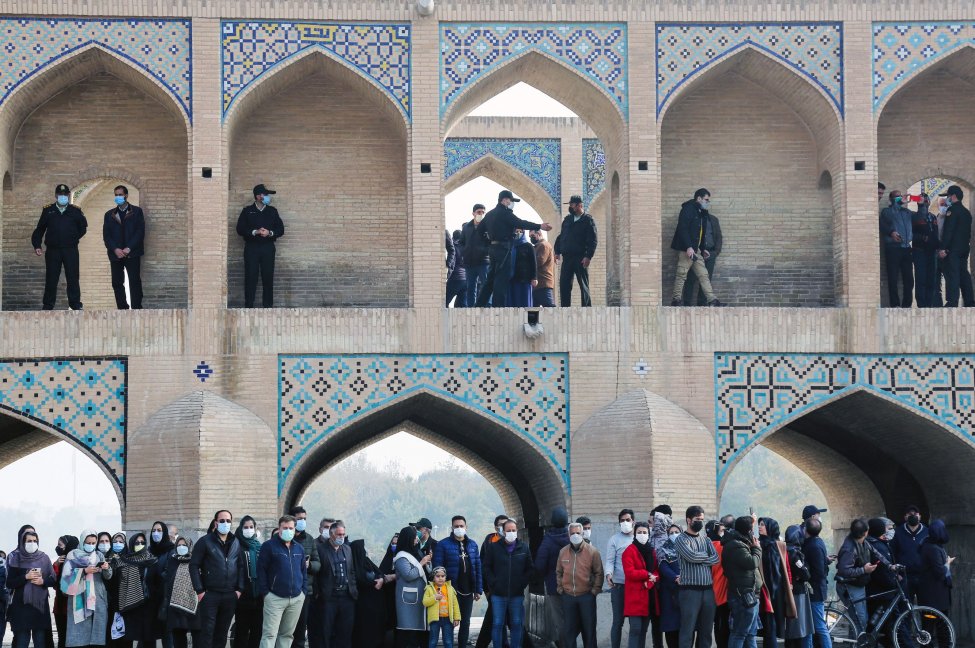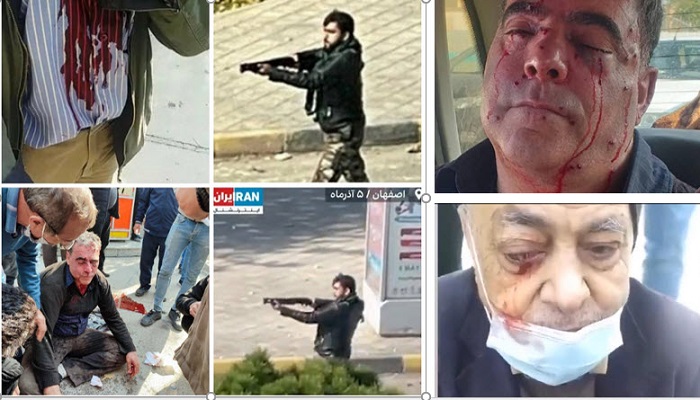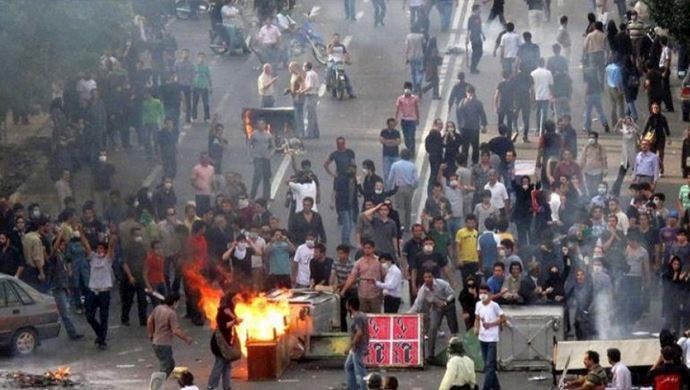
(NCRI) and (PMOI / MEK Iran): When the farmers returned to Zayandeh Rud on Friday morning, security personnel were waiting for them. The dictatorship began its habit of dispatching troops and repressing protests.
The uprising in Isfahan reflects the current status of Iran: a people that has lost patience with its authoritarian rulers for a long time, and a ruling class whose major tool of sovereignty—violence and intimidation—is rapidly losing effectiveness. Farmers from Isfahan returned to the Zayandeh Rud river’s parched basin on Friday, a day after regime security forces stormed their weeks-long peaceful assembly, torching their tents and forcing them to disperse. The authorities went to tremendous lengths to raze the region so that no trace of the protestors who had been holding sit-ins and protests for more than two weeks could be found.
Anti-riot forces attacked the farmer’s peaceful rally
Farmers demanding fair access to irrigation water and complaining about the government’s mismanagement of the province’s water supplies made up the majority of the demonstrators. The authority has mostly ignored their demands, offering only empty promises to address their issues in the future.
When the farmers returned to Zayandeh Rud on Friday morning, security personnel were waiting for them. The dictatorship began its habit of dispatching troops and repressing protests. Anti-riot forces attacked the unarmed farmers and attempted to disperse them. State security forces, Revolutionary Guards (IRGC) units, and plainclothes agents accompanied them. This time, however, the farmers, who have been driven to poverty and bankruptcy as a result of the regime’s policies, have remained firm. They fought back and drove the anti-riot soldiers away.

(PMOI / MEK Iran) and (NCRI): This time, however, the farmers, who have been driven to poverty and bankruptcy as a result of the regime’s policies, have remained firm.
The regime resorted to shooting protestors
Protests quickly expanded to other parts of the city, where they obstructed a motorcade of anti-riot units attempting to control the demonstrators. The protests swiftly morphed into political demonstrations, with demands for regime change and the removal of regime supreme leader Ali Khamenei’s control.
The regime resorted to shooting protestors, hurling tear gas into their midst, and firing pellet guns directly at them. Anti-riot forces attacked and physically beat demonstrators in certain regions. Several demonstrators were seriously injured, and several were detained.

firing pellet guns directly at them. Anti-riot forces attacked and physically beat demonstrators in certain regions. Several demonstrators were seriously injured, and several were detained.
Two years after the suppression of the protest in 2019
The actions in Isfahan are reminiscent of the November 2019 rallies, when a nationwide gathering to oust the mullahs’ dictatorial government erupted from protests over gasoline pricing. On the verge of catastrophic collapse, the regime only managed to keep its grip on power by shutting down the internet and turning to outright violence, ordering security forces to open fire on protesters. In just a few days, at least 1,500 people were slain, and many more were gathered up and transported to jails, where they were subjected to severe torture.
However, two years after the savage suppression of the protest in November 2019, Iran’s people have returned to the streets and are fighting the same security forces. The fundamental reason is that Iran’s regime is unable and unwilling to address the problems of the Iranian people. The regime’s own media and analysts are warning that the ongoing economic downturn is likely to spark a new round of violent protests that will be beyond the regime’s control.

(PMOI / MEK Iran) and (NCRI): Iran uprising that spread to 180 cities in 14 days with the goal of overthrowing the regime- File Photo.
The people of Isfahan are not the only ones who are affected by the regime’s water shortages. Protests over water shortages are ongoing in the provinces of Shahr-e Kord, Chaharmahal, and Bakhtiari. In July, there were violent water protests in Khuzestan, with the regime’s security forces killing and injuring hundreds of people.
In this aspect, Isfahan is but a taste of what is ahead for the dictatorship. The regime has reached a stalemate. If it resorts to violence, it will further enrage a populace that has lost faith in its repressive apparatus. Protests will continue to grow, join, and expand into larger movements that evolve from economic complaints to demands for regime change if it remains inactive.
However, two years after the savage suppression of the protest in November 2019, Iran’s people have returned to the streets and are fighting the same security forces.
MEK Iran (follow us on Twitter and Facebook)
and follow Maryam Rajavi’s on her site Twitter & Facebook
and follow NCRI (Twitter & Facebook) and People’s Mojahedin Organization of Iran – MEK IRAN – YouTube

